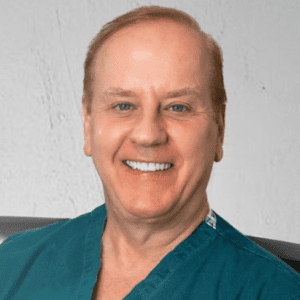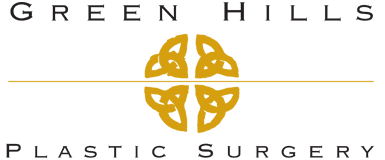
Compared to many plastic surgery procedures, “lunchtime” non-surgical treatments sound effortless. Pop in on your lunch break and come out looking amazing, right? In reality, while there are procedures that can take less than an hour to perform, some come with after-effects that require some recovery time and activity limits. In some cases, you want to be sure that there is enough recovery time to reap the full benefits of each procedure, especially if you are targeting a big event requiring photos.
This blog provides a straight-talk guide to four popular non-surgical options, including neuromodulators (e.g., BOTOX®), dermal fillers, chemical peels, and light/energy (laser) resurfacing treatments, so you know what’s typical for downtime, side effects, and timing.
Neuromodulators (BOTOX®, Dysport®, etc.)
What they do: Neuromodulators like BOTOX® temporarily relax specific facial muscles to soften fine lines and wrinkles in the forehead and around the eyes. Results are not instant, but most people notice changes in as little as one to two days.
BOTOX treatments or onabotulinumtoxinA injections work by temporarily relaxing the targeted muscles in the face that cause the appearance of lines while also making it harder for new ones to develop.
Downtime and side effects: There is typically no downtime or recovery time for botulinum toxin injections.
When to book before an event: According to the American Society of Plastic Surgeons, a couple of weeks should provide a safe cushion of time for optimal results and to ensure any small bruising has faded.
Dermal Fillers (e.g., Hyaluronic Acid)
What they do: These procedures are designed to restore or add volume (cheeks, lips), refine contours, and soften folds. Patients generally see improvement right away and can continue to see improvement over the next few weeks.
Dermal fillers can also “fill in” sunken scars and pitting from acne. They can be combined with other surgical and non-surgical treatments, including BOTOX, for more comprehensive results.
Downtime and side effects: The procedure can be done in as little as 45 minutes. Expect swelling or bruising for a few days, sometimes up to a week. Many providers recommend taking it easy for 24 to 48 hours.
When to book before an event: It is a good idea to wait about three to four weeks for optimal results, or before booking an event. This provides enough time for any swelling to resolve and for contours to look their best in photos.
Chemical Peels (Light, Medium, Deep)
What they do: Chemical peels use controlled exfoliation to smooth texture, brighten tone, and soften fine lines. Chemical peels are popular because they are affordable and can quickly improve the look and feel of your skin.
Micro or “light” peels can address fine lines and wrinkles, sun damage, and uneven skin tone. Medium and deep peels are more thorough and can treat more stubborn discoloration and other skin texture problems.
Here’s a quick breakdown of light, medium, and deep chemical peels from the American Society of Plastic Surgeons.
Downtime and side effects (vary by depth):
- Light peel: Redness and flaking are common at first, but downtime is minimal, and repeat sessions are typical for best results.
- Medium peel: Peeling often starts within about 48 hours and lasts about a week. During this time, the skin can be sun-sensitive, so strict SPF is key for several months.
- Deep peel: A deep peel requires more recovery. Many patients return to work around two weeks after the procedure, with redness that can persist longer. However, most patients can see dramatic results that last up to 10 years.
When to book before an event (such as one requiring photos):
- Light: 1–2 weeks
- Medium: 4–6+ weeks
- Deep: Up to 3 months (for any redness to subside)
Laser Resurfacing (Non-Ablative Lasers, IPL, Fractional Options)
What they do: Laser skin resurfacing procedures may sound like science fiction, but what they really do is target pigment, redness, texture, or fine lines using laser or intense pulsed light (IPL). Non-ablative treatments typically spare the skin surface, so social downtime is short. Whereas ablative resurfacing (e.g., some CO₂) works deeper and needs more recovery, but can have more long-lasting results.
Here’s a quick breakdown of these procedures from the American Society of Plastic Surgeons.
Downtime and side effects:
- Non-ablative/fractional and many IPLs: Redness or “sunburn-like” warmth for hours to a few days; brown spots may darken before flaking.
- Ablative lasers: Expect up to one to two weeks of more intensive recovery (soaks/ointments) depending on device and settings.
When to book before an event:
- IPL/non-ablative fractional: 2–4 weeks (longer if doing a series)
- Ablative fractional/CO₂: 6–12+ weeks (plan well ahead)
Safety First: Set Yourself Up for Smooth, Predictable Results
- Choose qualified medical providers. Treatments like neuromodulators, fillers, peels, and lasers are safest with trained, board-certified physicians and appropriately supervised medical professionals.
- Know the real risks. Fillers and injections are widely used and safe in expert hands, but the FDA highlights rare vascular events as reasons to insist on experienced injectors and proper technique.
- Expect and plan for recovery, even for “quick” visits. A little swelling, redness, or flaking is normal after many of the above-noted procedures. Sunscreen and aftercare are essential after skin resurfacing, as well as for surgical procedures.
Considering a Treatment in Nashville?
Green Hills Plastic Surgery has served Middle Tennessee since 1998 with a patient-first, safety-focused approach. If you are planning a personal “refresh” before an event — or simply want a personalized strategy — our team can help you time treatments to your calendar. Call 615-327-7407 or contact us online. For smart scheduling ideas, you might also like:
- 3 Plastic Surgery Procedures That Take Less Than an Hour
- 3 Med Spa Treatments to Fight Aging & Look Refreshed for Spring
- 5 Top Tips for a Smooth Summer Plastic Surgery Recovery
This article is educational and not medical advice. An in-person consultation is the best way to determine which treatment, device, or timing is right for you.

